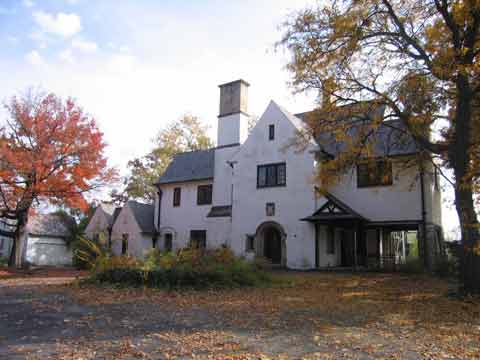Busch Stadium: Out With the Old, In With the New

The latest spectator sport in St. Louis is the demolition of the 1960s Busch Stadium designed by Edward Durell Stone. Every day you can see people lining 8th Street taking pictures and watching the demolition. To maintain their tight schedule demolition continues into the evening hours as well.
Friday night when I passed by on my scooter I got to see an amazing sight. The wrecking ball just hit a large section of the old stadium and a falling exterior column took out a scissor lift on the site. Ouch, expensive mistake.
Many are upset to see the modern stadium go in favor of the new retro stadium. In a post last month I listed buildings I’d raze before the old Busch. The circular form of the old stadium was one of its best features. The arches were unique and looked great at night. Other than that, I was not so impressed.
The old stadium was not a good urban neighbor. The harsh forms & materials did not invite anyone to look and touch. The building was not pedestrian friendly. The arches, the one redeeming feature, were too far removed from the sidewalk to compensate for the lack of interest otherwise presented to the outsider. The design never mattered much on game day because of all the people, it is those non-game days when empty that it took life away from the area. Sorry all you folks that love the old stadium, I’m not going to miss it.
But what about the new stadium?
Well, I’m over the whole red brick with black metal retro stadium look exemplified by the new Busch and countless other stadiums across the country built in the last 10 years. The whole notion of building something new trying to pass itself off as being from a century earlier makes me noxious nauseous. That having been said, I think the new stadium will accomplish a number of positive things the old stadium could not.
First, by constructing the new stadium closer to the highway it leaves room downtown for the “ballpark village,” a mixed-use development. This should help repair part of downtown torn apart in the 60’s. The new Busch is still bigger than a city block and therefore messes with the street grid. However, it recognizes the grid. Entrances on 8th Street and Broadway are aligned with Spruce, a subtle but important design element.
The new design will also be more inviting on non-game days. Despite what people may think, the inviting aspect will not come from the red brick and retro details. Instead it will come from generally pleasing massing and texture. With the new ballpark village and more activity at Cupples Station, the new stadium will have more activity around it on non-game days.
In time the new stadium will become beloved. Just not the same as the old stadium it replaces. The generic retro look is just too commonplace to set this stadium apart from all the other red brick retro buildings filling our city and others.
– Steve


 The South Broadway bluffs overlooking the Mississippi River in South St. Louis offer some of the most stunning views in the region. Seldom does a week go by that I don’t stop at Bellerive Park and take in the view. The view of Illinois is rural and lush while barges and industry remind me of the long history of the Mississippi as a working river.
The South Broadway bluffs overlooking the Mississippi River in South St. Louis offer some of the most stunning views in the region. Seldom does a week go by that I don’t stop at Bellerive Park and take in the view. The view of Illinois is rural and lush while barges and industry remind me of the long history of the Mississippi as a working river.